Lyncina carneola (Linnaeus, 1758)
Carnelian
cowry, 20-48mm
Lyncina carneola might
occupy the widest range of Marshall Islands habitats. They can be found commonly
under rocks from the intertidal reef on down as least to 45m and deeper in the
lagoon and on the seaward slope. Within the lagoon, they can be found under
rocks along shallow interisland reefs on both leeward and windward shores. Dead
empty shells are abundant in oceanside surge channels and common on deep lagoon
shipwrecks. In shell color and pattern, this species is almost identical to
two other cowries, Lyncina
leviathan and L.
propinqua. We have to admit we still have trouble telling them apart,
and feel that some of the characters that have been used to differentiate them
are not consistent. DNA analysis (Meyer (2003)) has apparently confirmed that these three species
are indeed different, but since that is not a tool available to most of us underwater
photographers, we have to make do with less distinctive and sometimes variable
features of the shell and animal. The shells of Lyncina carneola
and L. propinqua are smaller and smoother along the margins than L.
leviathan, which tends to have an irregularly bumpy outer edge. Lyncina
carneola and L. propinqua are said to usually have a diffuse bluish-white
band between the dorsal orange and brownish marginal coloration; this is clearly
visible in the first and several other photos below, less obvious in some others.
Lyncina leviathan is supposed to always lack this bluish-white band.
Lyncina carneola and L. propinqua are externally differentiated
mostly by the shape of the shell: L. carneola has more smoothly rounded
lateral sides, giving the overall shell a more elongate oval outline when viewed
from above, while L. propinqua is a bit wider with slightly more angular
sides, making it appear less elongate from above. Anatomically, there are consistent
and distinct differences in the radulae of L. carneola and L. leviathan.
The mantle papillae have been reported to be quite different as well, although
there is often confusing variation in the papillae of both L. carneola
and L. propinqua. Usually the papillae in those two species are somewhat
flattened paddles with serrations or small branches near the top, but some times
the papillae approach those of L. leviathan, which are more
tree-like with numeous branches, sometimes described as shaped like a "shaving
brush." We have included numerous photos of L. carneola below
to show the variation in mantle papillae. Lyncina carneola
is known from most of the Indo-Pacific.
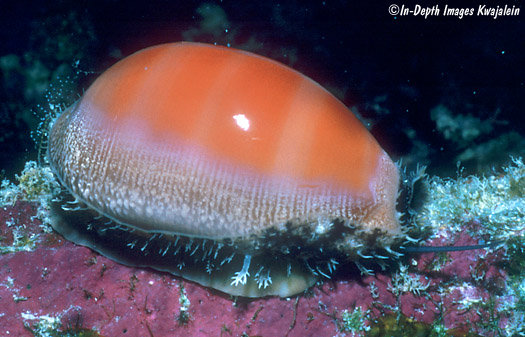
Here is a close view of some of the larger papillae from the specimen above.
Would these be considered flat with fingerlike branches near the top? Maybe.
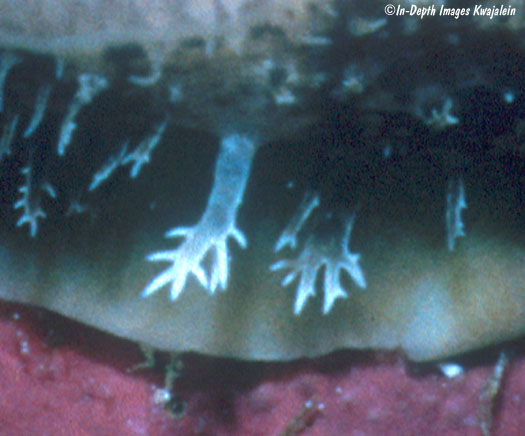
The specimens above and below clearly have the bluish-white band (less clear
in the photo below) separating the dorsal from the marginal coloration. However,
the papillae of the photo above look like some more problematic photos below.
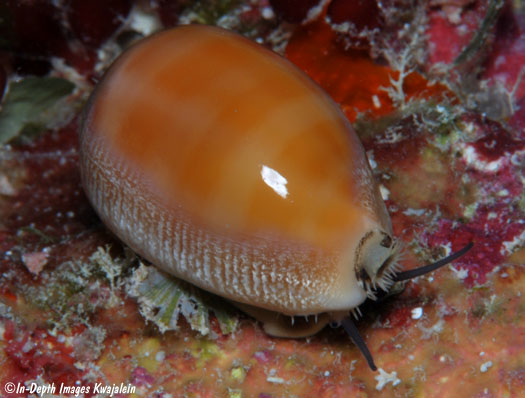
This slightly fuzzy shot, taken
in the Solomon Islands, illustrates papillae that seem to me to more closely
match the description of Lyncina carneola, which Burgess (1985) says are round
at the base with "flat blunt branches that closely resemble the flattened
human hand with the fingers spread on the same plane." It also matches
the color photo on page 80 of Burgess (1985). Or would these be better considered
square flattened sails with serrated tops, as described for L. propinqua?
Compare this with the following two photos.
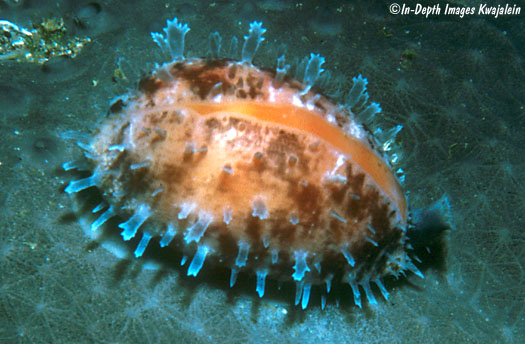
The next three shots illustrate a specimen we considered Lyncina carneola
due to its small size and lack of bumps along the lateral shell margins. However,
its papillae are distinctly branched up near the top, much more like Lyncina
leviathan's "shaving brush-like dendritic papillae" of Lorenz & Hubert (2000). Of course, this could have been a small L. leviathan
with no lateral bumps, but its papillae seem to us at least similar to the obvious
L. carneola in the first photo on this page. We think this group of
cowries has a fair bit more work that needs to be done on it. In particular,
we would be interested in seeing the results of DNA analysis on particular specimens
from this area whose living anatomical features have also been clearly photographed
for comparison.
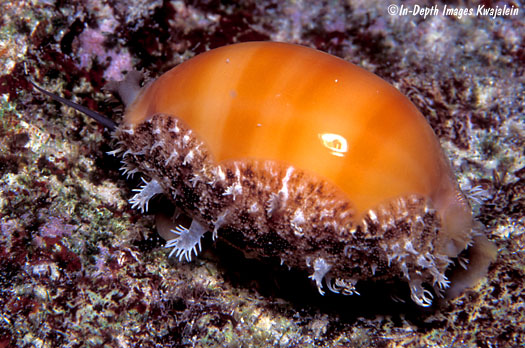
This is just a closer view of the papillae from the photo above.
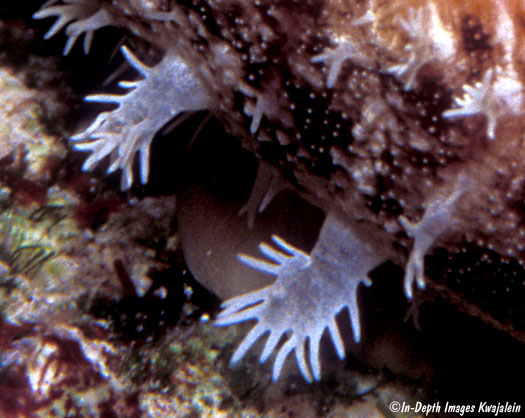
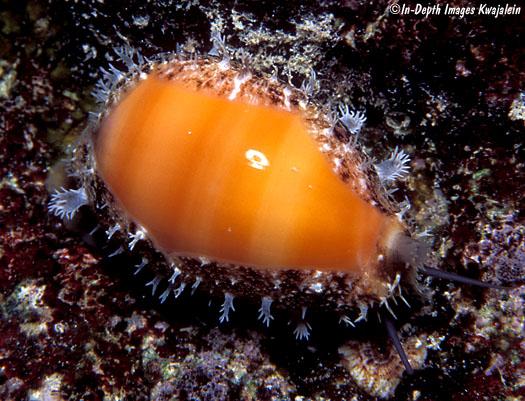
This is another view of the same
specimen as shown in the first photo on this page, showing a few more of the
papillae and the brown foot.
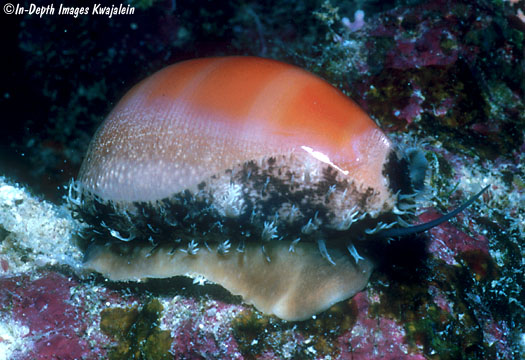
Here are two shots of what appears
to be a juvenile specimen.
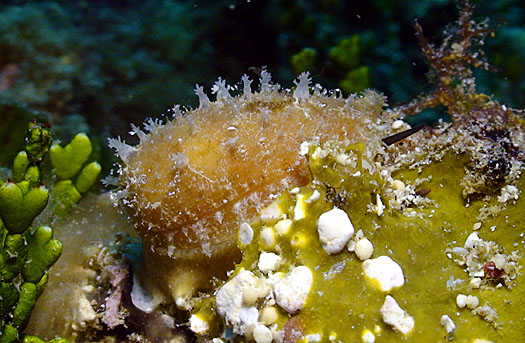
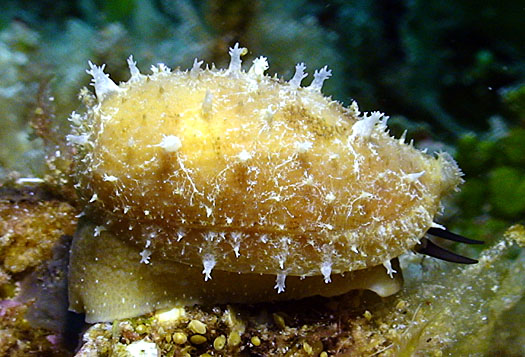
Here's a good view of the eyes
and tentacles on a small adult.
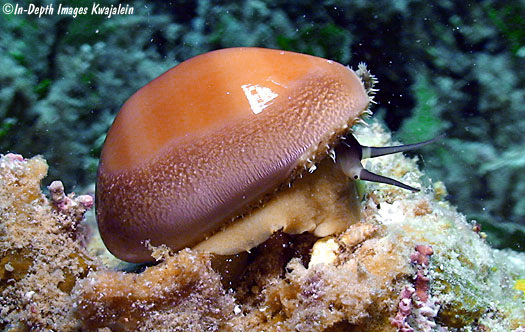
And another.
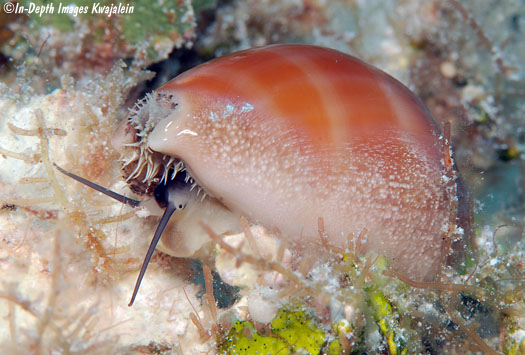
A few more shots of additional
specimens for mantle comparisons.
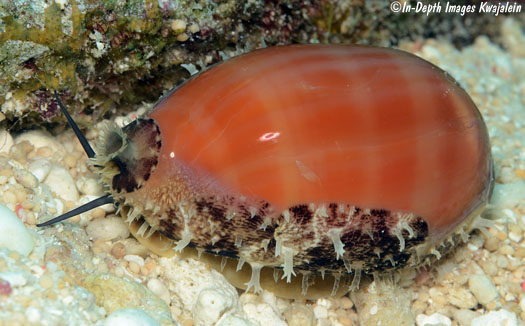
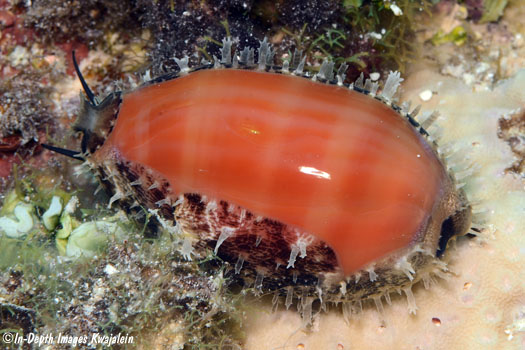
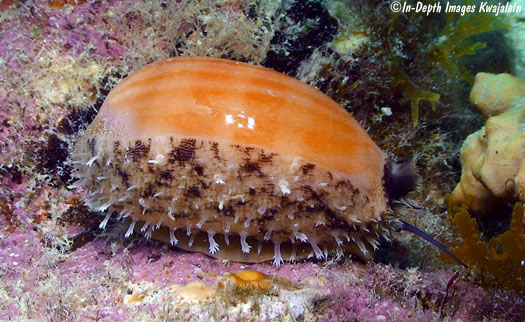
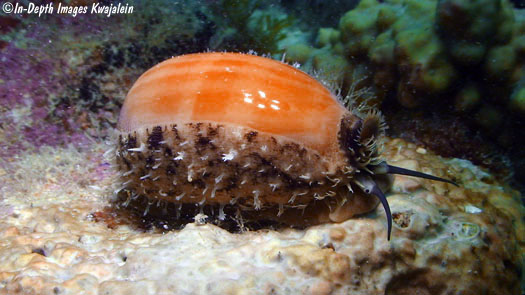
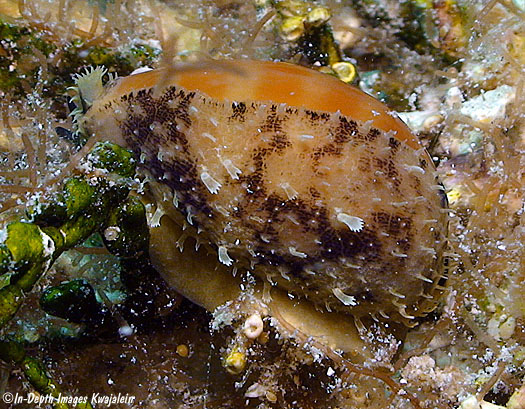
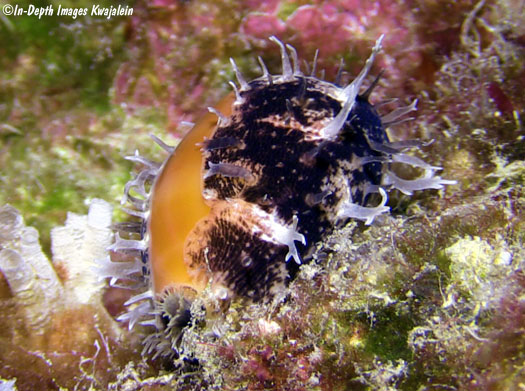
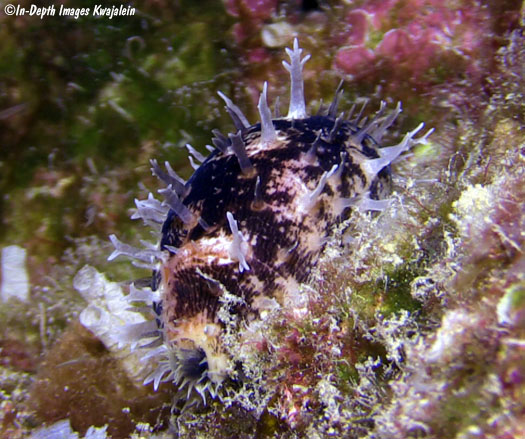
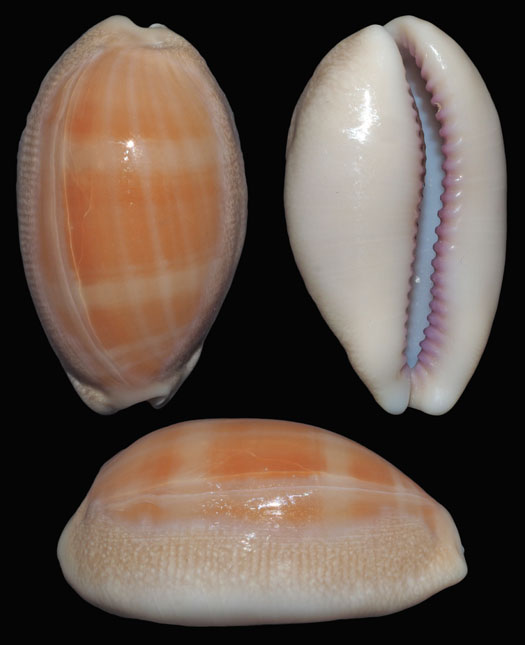
39.9mm, 24 April 1992
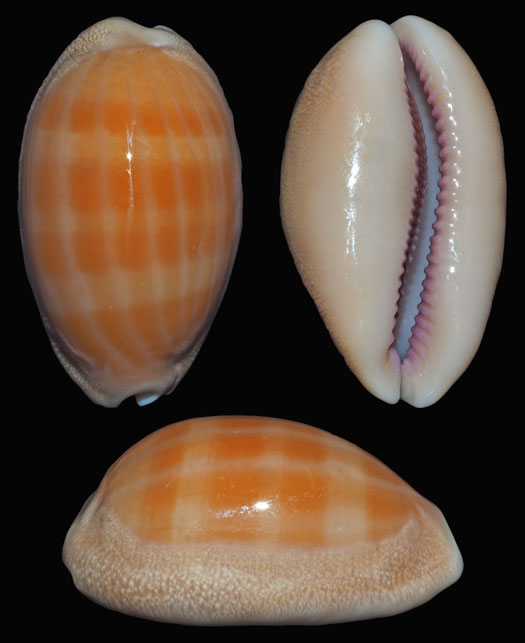
Created
1 April 2008
Updated 24 February 2020
Back to
cowries
Kwajalein Underwater Home





















